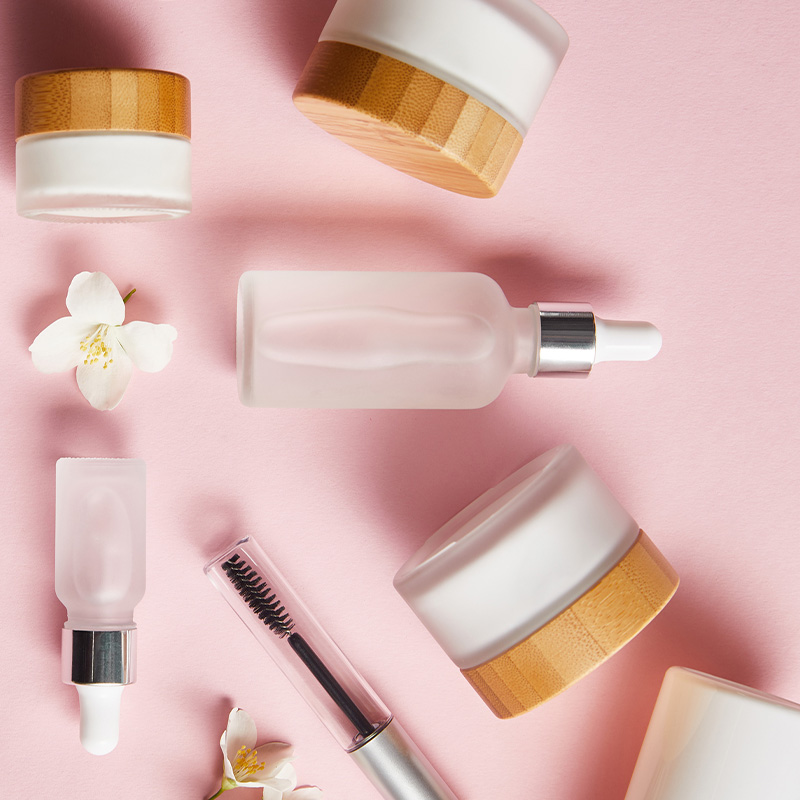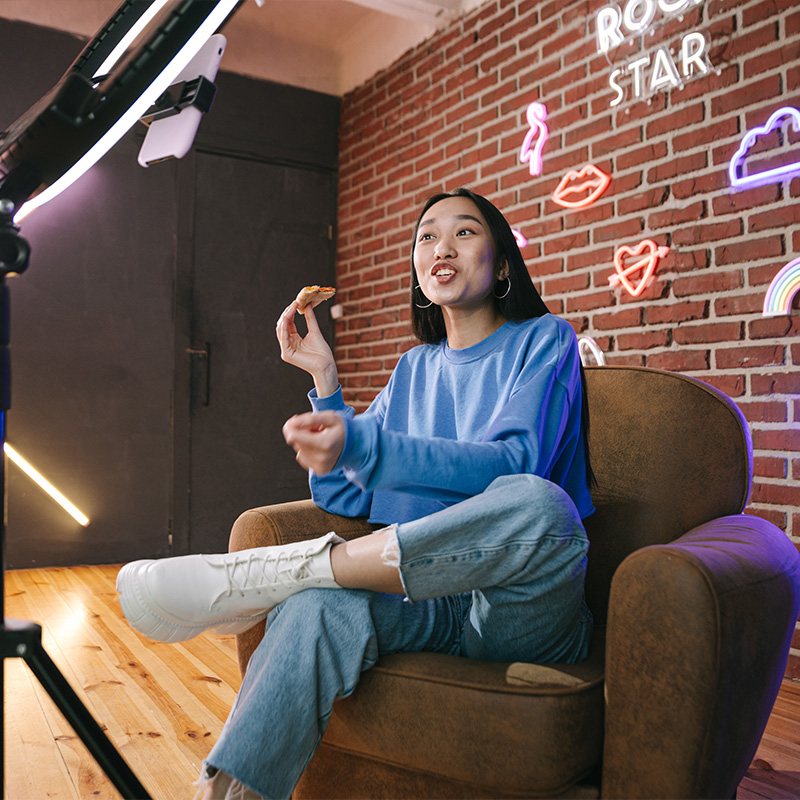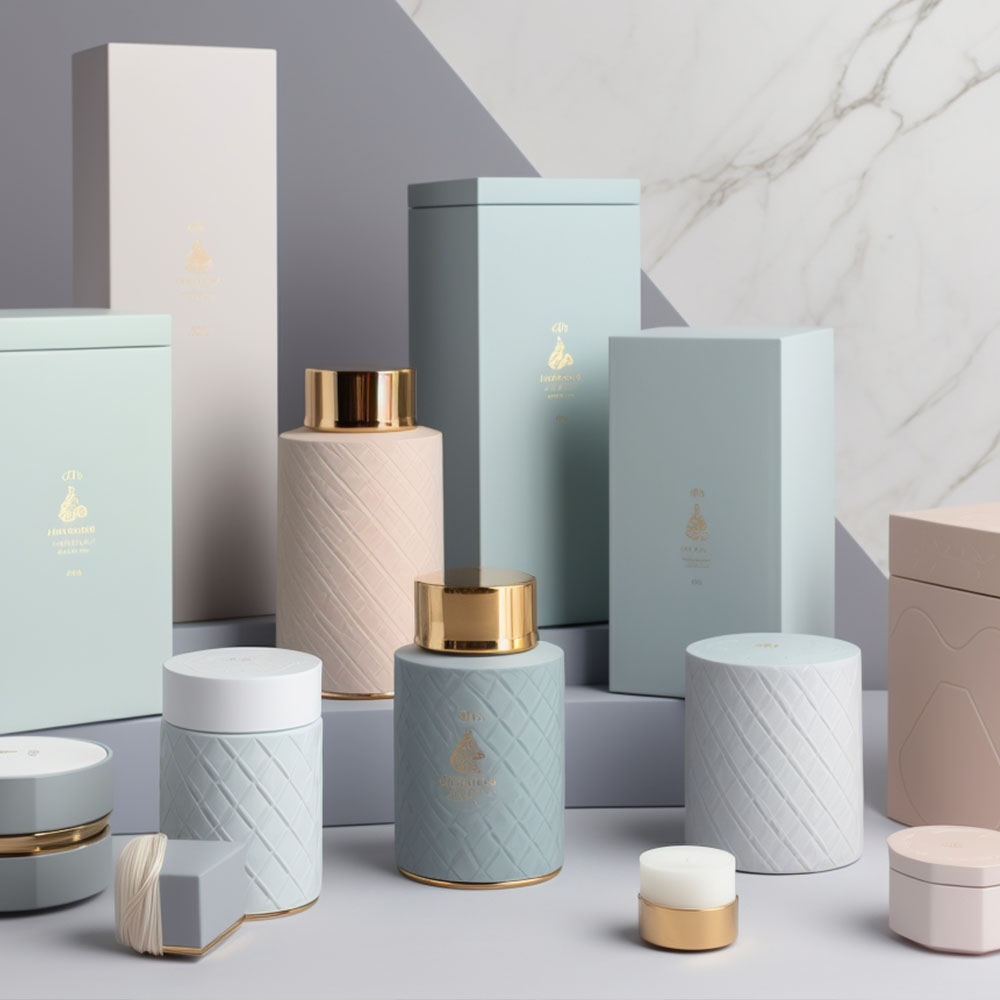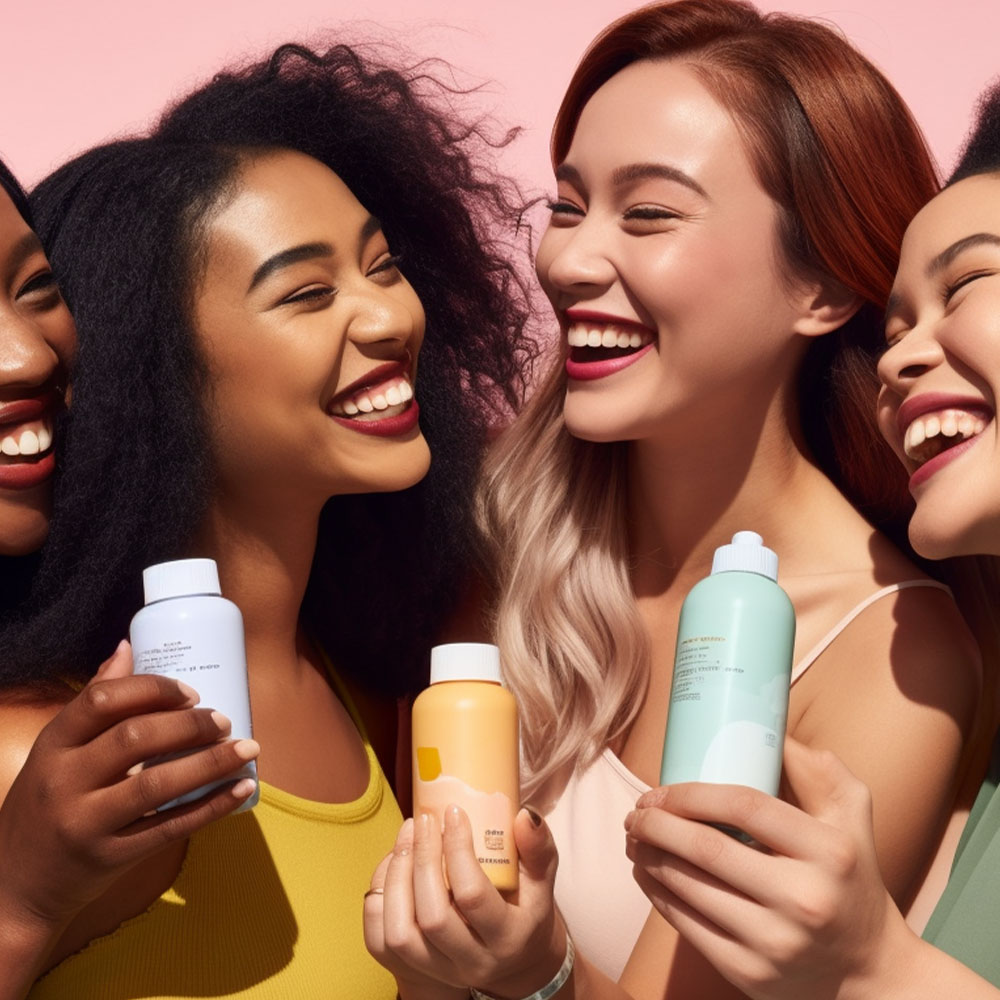
Hey there, beauty brand enthusiasts! Are you looking for proven beauty brand marketing strategies to take your business growth and expansion to the next level? Look no further because I’ve covered you with ten tried-and-true tactics that will help elevate your brand in today’s ever-evolving market.
Standing out from the crowd can be challenging in a world where new beauty products are introduced daily. But by implementing these strategies, you’ll differentiate yourself and create a strong connection between your brand and your target audience. So buckle up and get ready to learn how to leverage social media, influencer partnerships, experiential marketing, and more – all while staying true to your brand identity. Let’s dive in!
Building A Strong Brand Identity
As a beauty brand marketing expert, it’s essential to understand that building a solid brand identity is critical for growth and expansion. To differentiate your brand from competitors, you must create a unique selling proposition (USP) that speaks directly to your target audience. It may take some time to develop, but once you’ve identified what sets you apart, use it in your messaging.
One way to stand out visually is by creating consistent branding elements across all platforms. Your logo, color palette, typography, and packaging design should be cohesive and easily recognizable. A consistent visual identity will make it easier for customers to remember your brand over others.
Another crucial aspect of building a solid brand identity is understanding your target market thoroughly. You must know their needs, wants, preferences, pain points, and purchasing behaviors. This knowledge will help you tailor your message appropriately to resonate with them emotionally.
Finally, remember that building a solid brand identity isn’t just about visuals; it’s also about the experience you provide customers with every interaction they have with your business. Everything from customer service to product quality contributes to how people perceive your brand. So make sure every touchpoint aligns with the values and personality of your brand identity without fail!
Defining Your Target Audience
Identifying target demographics is critical to successful beauty brand marketing. Knowing your ideal customer’s age, gender, location, and interests can help you target the right audience. Understanding customer needs is essential to determine what they’re looking for in a beauty brand. Developing buyer personas will help you create marketing campaigns tailored to each group of potential customers. This will provide a personalized experience, making them more likely to engage with your brand. By understanding the needs of your target audience, you can create content that resonates with them, resulting in more conversions. With these strategies, you can create a successful beauty brand marketing plan that will help you grow and expand.
Identifying Target Demographics
To successfully use beauty brand marketing, it is essential to identify the target demographics. Effective segmentation and consumer profiling are critical elements of defining your target audience. By understanding who your customers are and what they need, you can tailor your marketing efforts and create products that resonate with them.
Segmentation involves dividing potential buyers into groups based on shared characteristics such as age, gender, income level, or lifestyle. This allows marketers to develop targeted campaigns that speak directly to each group’s unique needs and preferences. Consumer profiling goes deeper by examining individual customer behavior patterns, interests, and purchasing habits. Armed with this information, marketers can create personalized messages that connect with consumers on an emotional level.
When identifying target demographics for a beauty brand, there are several factors to consider. For example, age plays a crucial role in skincare product selection – younger consumers may be more interested in anti-acne treatments, while older customers might prefer anti-aging solutions. Gender influences buying decisions; men focus on hair care products, whereas women typically purchase makeup. Income level is another important consideration since luxury brands appeal to higher-income individuals while drugstore brands cater to budget-conscious shoppers.
To effectively identify your target demographic, analyze customer data, including purchase history and online engagement metrics. You can also conduct surveys or focus groups to gather insights about your ideal customer’s preferences and pain points. Once you have a clear picture of your audience, use this information to craft compelling marketing messages that resonate with their needs and desires.
In conclusion, effective segmentation and consumer profiling are critical to identifying target demographics for a beauty brand’s growth and expansion strategy. Understanding who your customers are helps you create tailored marketing campaigns that resonate deeply with them emotionally, ultimately driving sales growth for the business. Remember: Successful marketing requires constant attention to evolving trends, so stay innovative if you want continued success!
Understanding Customer Needs
Now that we have discussed how to identify your target audience in beauty brand marketing, it’s time to delve deeper into understanding their needs. After all, customer satisfaction is the ultimate goal of any marketing effort. To achieve this, you must conduct market research techniques that provide insights into what motivates and drives your customers’ purchasing decisions.
One way to understand customer needs is by analyzing data on their previous purchases and interactions with your brand. This information can reveal patterns in buying behavior and help you anticipate future demand for specific products or services. Additionally, staying current on industry trends and consumer preferences would best offer innovative solutions that meet changing expectations.
Another critical factor in understanding customer needs is empathy – putting yourself in the shoes of your target audience and genuinely listening to their feedback. You can gain valuable insight into their pain points and desires by actively seeking customer input through surveys, focus groups, or social media engagement. Then, use this information to tailor product offerings and messaging that speak directly to them.
Ultimately, building a comprehensive understanding of your customers’ needs requires ongoing attention and adaptation as market conditions change. By staying open-minded, empathetic, and proactive in responding to shifts in consumer preferences, you will be well-positioned to drive growth for your beauty brand while achieving high levels of customer satisfaction along the way.
Developing Buyer Personas
Now that we better understand how to identify our target audience and their needs, it’s time to craft personas. Crafting personas is essential in creating targeted marketing campaigns that resonate with your ideal customers. You can create fictional profiles representing your core customer base by focusing on demographics such as age range, income level, and lifestyle preferences.
By developing buyer personas, you gain insights into the makeup of your target audience beyond basic demographic information. For example, you’ll learn about their motivations for purchasing beauty products and services, what pain points they experience when shopping for these items, and how they prefer to interact with brands online and offline. With this knowledge, you can tailor your marketing messages to address specific concerns or desires unique to each persona.
To develop effective buyer personas, analyze data from previous purchases and interactions with your brand. Look for patterns in buying behavior among different groups of customers based on factors like age, gender, or location. Next, conduct surveys or focus groups to gather additional feedback from customers within specific persona categories. Use all of this information to build out detailed descriptions of each persona’s interests, values, goals, and challenges.
Crafting accurate buyer personas takes effort but pays off when reaching potential customers effectively. By speaking directly to the wants and needs of different segments within your target audience through tailored messaging and offerings, you will be well-positioned to drive growth while achieving high levels of customer satisfaction along the way.
Leveraging Social Media Platforms
After defining your target audience, leveraging social media platforms is the next step. Social media has become a crucial aspect of any marketing campaign today, and beauty brands are not left out. By effectively utilizing social media platforms, you can reach a wider audience and maximize engagement with current and potential customers.
One way to leverage social media in beauty brand marketing is by creating visually appealing content that resonates with your target audience. Through stunning images or engaging videos, visual content always captures people’s attention on social media platforms like Instagram and TikTok. You should also ensure that your captions are compelling enough to keep viewers engaged while educating them about your brand.
Another effective strategy for maximizing engagement on social media is collaborating with influencers in the beauty industry. Influencer marketing has proven an excellent way to expand reach since influencers have loyal followers who trust their recommendations. As such, partnering with an influencer whose values align with yours will help spread awareness about your brand and boost customer acquisition.
Measuring ROI (return on investment) is essential when leveraging social media platforms for growth and expansion as a beauty brand. Therefore, it would be best to regularly track key metrics like follower count, post engagements, click-through rates, and conversion rates. This helps you determine which strategies work best to optimize future campaigns accordingly.
In summary, leveraging social media platforms is critical for successfully growing and expanding a beauty brand. Maximizing engagement through visually appealing content creation, collaborating with industry influencers, and tracking key metrics like ROI ensures optimal performance from each campaign run on these channels.
Utilizing Influencer Partnerships
The adage goes, “If you want to go fast, go alone. If you want to go far, go together.” This could not be more true regarding utilizing influencer partnerships in beauty brand marketing.
Choosing the right influencers can make or break your campaign’s success. So it’s essential to look beyond their follower count and consider factors such as engagement rates, audience demographics, and authenticity of content. By aligning with the right influencers who share your brand values and aesthetic, you can tap into a new audience that trusts their recommendations.
But how do you measure the effectiveness of these partnerships? One way is tracking website traffic, sales conversions, and social media impressions. Additionally, gathering feedback from the influencer and your audience can provide valuable insights into what worked well and areas for improvement.
Establishing clear expectations and guidelines for the partnership from the start is also crucial. This includes outlining deliverables, compensation agreements, and product usage or messaging restrictions. By setting these boundaries early on, both parties can work collaboratively towards a successful partnership without miscommunication or misunderstandings.
Incorporating influencer partnerships into your beauty brand marketing strategy can bring fresh perspectives and increased reach to your campaigns. With careful consideration in choosing the right influencers and measuring effectiveness through data analysis, this tactic has proven to be a valuable tool for growth and expansion in the industry.
Creating Authentic Content
The beauty industry is all about authenticity, and brands that can create content that resonates with their audience are the ones that will succeed. Your brand’s story is what sets you apart from your competitors, so it’s essential to use storytelling techniques to connect with your customers on a deeper level.
One effective way of creating authentic content is by collaborating with influencers or other brands in the industry. By partnering with someone with an established following, you can reach new audiences while building trust and credibility for your brand. In addition, these collaboration opportunities allow you to tap into different perspectives and styles, which can help keep your content fresh and exciting.
When crafting your message, focus on telling a story rather than simply selling products. For example, share behind-the-scenes glimpses into how your products are made or highlight customer success stories. This approach helps build emotional connections with consumers and creates lasting relationships.
Another technique for creating authentic content is highlighting diversity and inclusivity within your brand messaging. Today’s consumer base values diversity more than ever, so it ensures your marketing reflects this reality. Speak against harmful stereotypes and celebrate individuality; these messages will resonate deeply with many potential customers.
Incorporating these tips into your overall marketing strategy will give you an edge over competing brands in the crowded beauty space. Remember: people buy from brands they know, like, and trust – so take time to craft a compelling narrative around yours!
Embracing Experiential Marketing
Experiential marketing has become a crucial strategy for beauty brands to engage with customers innovatively and immersively. This approach focuses on creating memorable experiences that allow consumers to connect with the brand on a deeper level. Immersive events are one of the best ways to achieve this objective.
These events provide a unique opportunity for beauty brands to interact directly with their target audience, allowing them to showcase their products in a creative and engaging environment. In addition, by providing interactive pop-ups, such as makeup tutorials or skincare consultations, they can offer personalized experiences that build customer trust and loyalty.
Interactive pop-ups are another effective experiential marketing tool used by beauty brands. These installations create a buzz around the brand and its products while encouraging customer participation through various activities like product testing or giveaways. In addition, customers feel valued when given exclusive access to new launches or limited edition collections at these events.
In summary, embracing experiential marketing is essential for any beauty brand seeking growth and expansion in today’s market. It allows companies to create meaningful connections with their customers while innovatively showcasing their products. Immersive events and interactive pop-ups play a vital role in achieving this goal. So if you want your brand to stand out from the competition, take advantage of these opportunities- it will be well worth the investment!
Offering Exclusive Promotions
Did you know that offering exclusive promotions to your customers can increase customer retention by up to 80%? That’s right; beauty brands who collaborate with celebrities and target holidays to offer unique deals have seen significant growth in their business. In today’s fast-paced market, businesses must stand out from the competition, and offering exclusive promotions is a great way to do just that.
Collaborating with celebrities has become increasingly popular as consumers are drawn to products their favorite stars endorse. By partnering with a celebrity or influencer, beauty brands can create buzz around their product and attract new customers. In addition, offering an exclusive promotion through this collaboration increases brand awareness and incentivizes customers to try the product.
Targeting holidays is another effective strategy for offering exclusive promotions. Consumers tend to be more willing to spend money during holidays, making it an ideal time for beauty brands to introduce special deals. For example, creating limited edition gift sets or bundling products at a discounted price during Valentine’s Day or Mother’s Day can entice customers and boost sales.
It is essential for beauty brands to continuously innovate and offer creative ways for customers to engage with their products. Exclusive promotions are one of the most effective strategies for achieving this goal. Collaborating with influencers and targeting holidays are just two examples of how beauty brands can set themselves apart from competitors while increasing customer loyalty and driving sales.
Remember, these tips are just scratching the surface! Beauty brands can leverage exclusive promotions as part of their marketing strategy in many other ways. So get creative and start thinking outside the box – your customers will thank you!
Expanding Your Product Line
As a beauty brand, it’s essential to keep innovating your product line to stay relevant and meet the demands of your customers. One way to do this is through product innovation. By creating new products or enhancing existing ones, you can provide more options for your customers while keeping up with industry trends.
However, before diving into any new product development, conducting market research is crucial. This helps you understand what your target audience wants and needs from a beauty brand like yours. With this knowledge, you can develop products that cater to their desires and preferences.
When expanding your product line, it’s also essential to consider the overall branding strategy of your company. You want your products to align with your brand image and message seamlessly. A 3-item numeric list in markdown format below outlines some key considerations when developing new products:
- Stay true to your brand: Make sure each new product complements your existing offerings.
- Keep an eye on industry trends: While staying true to your brand, be aware of emerging trends in the market and incorporate them thoughtfully.
- Consider customer feedback: Take note of customer feedback on current products and use it as inspiration for future developments.
By following these guidelines, you can successfully expand your product line while maintaining consistency with your overall branding strategy.
Innovation is critical in the highly competitive world of beauty brands. Expanding your product line allows you to reach more consumers by providing them with diverse options they seek out when shopping for beauty products. Incorporating thorough market research ensures that these new offerings will resonate well with potential buyers’ requirements while staying within the context of established messaging strategies aligned with their values regarding cosmetics usage habits without compromising quality standards or ethical practices concerning production processes such as sustainability in packaging materials sourcing or animal testing policies implemented throughout every step involved during creation phases until final delivery points like retail stores worldwide!
Analyzing Your Results
Expanding your product line is an exciting venture that can bring in new customers and increase revenue. However, measuring these additions’ effectiveness is essential to ensure they drive growth for your brand. In addition, measuring effectiveness can help you identify opportunities for improvement and make data-driven decisions.
One way to measure effectiveness is through sales data. Analyzing which products are selling well and which aren’t can inform future product development and marketing strategies. Additionally, customer feedback is valuable in understanding how consumers perceive your new offerings. Gathering reviews, conducting surveys, and monitoring social media can provide insight into what customers like about your new products and where there may be room for improvement.
Identifying opportunities for expansion doesn’t necessarily mean creating entirely new products. It could also involve expanding on existing categories or offering variations of popular items. For example, if a particular lipstick shade is consistently selling out, consider adding more shades within the same color family or introducing complementary lip liners or glosses. These minor tweaks can refresh your product line while catering to consumer demand.
Ultimately, analyzing results should be an ongoing process rather than a one-time event. Continuously collecting data and evaluating performance allows you to stay ahead of industry trends and adapt quickly to changes in consumer behavior. By measuring effectiveness and identifying growth opportunities, your beauty brand can continue to innovate and thrive in a competitive market without compromising its unique identity.
Staying Ahead Of Industry Trends
Staying Ahead of Industry Trends
As a beauty brand, one of the most crucial factors in maintaining growth and expansion is staying ahead of industry trends. In today’s rapidly evolving market, keeping up with the latest innovative techniques and practices shaping the industry is essential. And the best way to do this is by conducting extensive market research.
Market research insights will help you stay on top of emerging trends and consumer preferences, allowing you to pivot your marketing strategies accordingly. For example, you can understand what customers want and expect from beauty brands by analyzing current data through surveys, social media analytics, focus groups, or other means.
Once you have gathered relevant information about consumer behavior patterns and preferences, use these insights to create new products or services that align with their needs. For example, if there’s a growing interest in natural skin care products among consumers within your target demographic, consider incorporating more organic ingredients into your formulations.
In conclusion,
Staying ahead of industry trends is critical for any beauty brand looking to expand its customer base and grow its revenue streams in an ever-changing marketplace. But it takes more than simply following fads – it requires taking calculated risks based on reliable market research insights. So invest time and resources in gathering data about your customers’ behaviors and preferences so that you can tailor your offerings to meet their changing needs over time.
Conclusion
As a beauty brand marketing expert, I can confidently say that the strategies outlined in this article will help you achieve growth and expansion. By building a solid brand identity and defining your target audience, you lay the foundation for success. In addition, leveraging social media platforms, utilizing influencer partnerships, and creating authentic content are all essential components of a successful marketing plan.
But don’t stop there! Offering exclusive promotions, expanding your product line, analyzing your results, and staying ahead of industry trends will keep customers engaged and interested in what your brand offers. And remember to ask yourself: what makes our brand unique? What sets us apart from competitors? This rhetorical question can guide your decision-making as you grow and expand your beauty brand.
With these ten proven strategies in mind, you’ll be well on your way to achieving long-term success in the competitive world of beauty branding. So go forth with confidence and watch your brand thrive!









